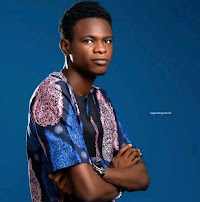The first mention of Wurkun is made by Reverend Samuel Crowther in his account of the explanatory journey of the Benue in 1854: On the back of the Muri range, behind the town of Hammaruwa (Muri) are tribes of Pagans called Wurukunu (Wurkun) and Zangale (Tangale) who are said to be cannibals and go about naked, some of whom have been conquered and are now subject to the Fulani's (1855). Another mention of the Wurkun is also made by Ruxton (1907) who describes them as independent hill people living on the eastern borders of Muri province.
The word "Wurkun" means people of the hills or a group of five distinct dialects that forms the Wurkun language namely: Kulung, Khodei, Kwanchi, Piya, and Pero. Not all Wurkun can speak and understand all Wurkun dialects. Stretching along the upper Benue valley and on the southern borders of the Muri mountain ranges, the Wurkun, who are referred to as the “people of the hells” are found, alongside other small ethnic groups whose languages belong to the Chadic language family and two branches of the Niger-Congo—Adamawa, and Benue-Congo. The name Wurkun is often thought to be a corruption of the word “Wurkoni”—being the zenith of the Muri Mountains.
The wurkun are peace loving people, farmers, hardworking, accommodating and most of the Wurkun women are reffered to as the most beautiful girls in Taraba state. The Wurkun people are great farmers and are known for production of beans, groundnut, millet, guinea corn, sesame seed and cassava.
THE WURKUN ATTIRE
The Wurkun Attire carries the following symbols namely: the groundnut and spear. The groundnut symbolizes Farming while the spear symbolizes Victory which was won by their forefathers.
The colour on the Wurkun Attire include: Blue, milk and dim yellow. The blue symbolizes Royalty, the milk symbolizes fertility and the yellow symbolizes brightness and beauty of the Wurkun land.
THE BORI FESTIVAL
The men at different age levels had different facial marks. Some of the younger ones had a single deep strokes slashed across the cheek, while the older, middle aged ones had several and light slashes on their checks. Beads of sweat cascaded down their brows, formed rivulets around their trunks and wetted the dry ground. With beaming faces, they clasped short sticks and shook their chests, stooping and rising, in consonance with the rhythmic beat of the drums. It was Wurkun’s dance of the harvest of guinea corn, it was Wurkun’s celebration of the harvest season, it was Wurkun’s thanksgiving to God for bountiful harvest.
THE PEPHE FESTIVAL
Pephe, as the annual festival of the Wurkun people of northwestern Taraba is called, is a cultural fiesta that literally means sacrifice. And in the spirit of sacrifice, the people feast all night long and sleep in the open village square. Nobody is allowed to sleep indoors on the night preceding the day of the farmers’ dances.
THE GUROGURO DANCE
Guroguro—the dance for the harvest of sorghum was just one of the dances that were performed at the colourful ceremony. It was outstanding, not in terms of costume—because the male dancers simply clad in yellow and blue patterned wrappers around their waists—and certainly not in terms of sophisticated pirouetting dance steps, but for the cultural significance that it held for the people. The guroguro performance emphasized the importance of agriculture as the occupation of Wurkun, who have sorghum, maize and beans as their staple crops. The measured dance steps rising and falling in cadence with the throbbing drums signified the unadorned life of a farmer. The puffed shoulders of the dancers as they swirl round the centre of the Bachama village square portrayed the pride of a farmer who is content to eat the fruits of his toil.
Most importantly, pephe is a celebration of unity of the Wurkun race. Bachama, where the festival is held annually is regarded as the ancestral headquarters of the wurkun. Another dance that was central to the celebration of pephe was Kidan Noma. The farmers dance was a simple digging gesticulation of the two arms clasping short sticks. Lined up behind three drummers, the dancers moved their bodies to the rhythms of the vibrating drums and the joyful chants of the women.
Compilation By:
Magdalene Adamu Musa, Edited By Jeremiah Genesis Ezra




Love What You Read? Comment Here